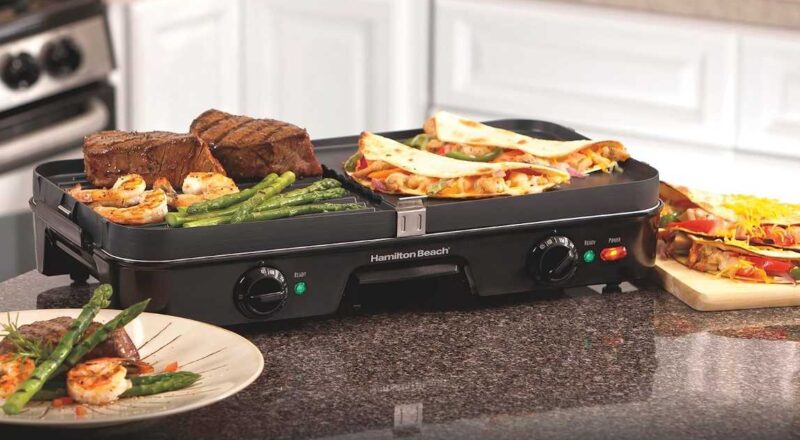Seasoning a reversible griddle is an essential process for ensuring optimal cooking performance and longevity. Many kitchen professionals and home cooks alike often overlook this crucial step. By learning how to season a reversible griddle properly, you can enjoy a non-stick surface that enhances the flavor of your food and extends the life of your cookware.

What is a Reversible Griddle?
A reversible griddle is a versatile piece of cookware that offers two surfaces in one: a flat side for pancakes, eggs, and sandwiches, and a ridged side for grilling meats and vegetables. This dual functionality makes it a valuable tool in any kitchen. However, to maintain its performance, proper seasoning is necessary.
Why is Seasoning Important?
Seasoning a griddle involves applying a layer of oil to create a non-stick surface and prevent rusting. This process is especially important for cast iron griddles, which are prone to rust if not properly cared for. Seasoning helps to build up a protective layer that enhances cooking and cleaning.
The Science Behind Seasoning
When you heat oil on the griddle, it polymerizes, forming a hard, plastic-like coating. This coating bonds to the metal, creating a smooth surface that improves with each use. Understanding this science can help you appreciate the transformation your griddle undergoes during seasoning.
Preparing Your Griddle for Seasoning
Before you begin seasoning, it’s important to clean your griddle thoroughly. This removes any residues or contaminants that could affect the seasoning process.
Cleaning the Griddle
Use warm water and a mild detergent to scrub the griddle. Avoid using harsh chemicals or abrasive materials that can damage the surface. After cleaning, dry the griddle completely to prevent rust.
Choosing the Right Oil
The type of oil you use for seasoning can impact the quality of the non-stick surface. Oils with a high smoke point, such as flaxseed, canola, or vegetable oil, are recommended. These oils polymerize well, creating a durable coating.
Step-by-Step Guide to Seasoning
Step 1: Apply the Oil
Pour a small amount of your chosen oil onto the griddle. Use a paper towel or cloth to spread the oil evenly across both sides of the griddle, including the edges.
Step 2: Heat the Griddle
Place the griddle on a stovetop burner or in an oven. Heat it on medium until it begins to smoke. This indicates that the oil is polymerizing and bonding to the surface.
Step 3: Cool and Repeat
Once the smoking stops, remove the griddle from heat and allow it to cool. Repeat the oiling and heating process 2-3 times for a stronger seasoning layer.
Maintaining a Seasoned Griddle
Regular maintenance is key to preserving your griddle’s seasoning.
Cleaning After Use
After each use, clean the griddle with warm water and a brush. Avoid soap, as it can strip the seasoning. Dry thoroughly and apply a light coat of oil before storing.
Re-Seasoning as Needed
If you notice food sticking or the surface looking dull, it’s time to re-season your griddle. Follow the same steps to restore its non-stick properties.
Common Mistakes to Avoid
Avoid these common missteps to ensure effective seasoning:
- Using too much oil, which can create a sticky residue.
- Not heating the griddle sufficiently, preventing proper polymerization.
- Skipping the cooling step, which can cause uneven seasoning.

FAQs
How often should I season my reversible griddle?
It depends on usage, but generally, you should season it every few months or when you notice food beginning to stick.
Can I use any oil for seasoning?
While you can use any oil, it’s best to choose one with a high smoke point, like flaxseed or canola oil, for a more durable coating.
Is it okay to wash a seasoned griddle with soap?
It’s best to avoid soap as it can strip away the seasoning. Use warm water and a brush instead.
For more detailed information on reversible griddles, visit Lodge Cast Iron. Additionally, for a comprehensive guide on buying a reversible griddle, visit How To Clean Cast Iron.
This article contains affiliate links. We may earn a commission at no extra cost to you.

